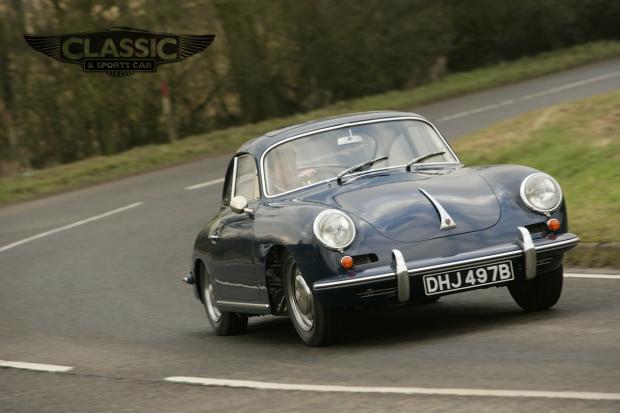If these doubts threaten to overtake you, just look forward and gaze upon the three big dials with their traditional green numerals. They’re gentle reminders of what this car is all about. On the left is the mph speedo rising to 160mph; in the centre is the rev counter, which reads to a heady 8000rpm, 1000 higher than the top of the redline (lest you forget that this is a pure driver’s car). On the right is oil temperature and fuel.When you consider what it is worth solely as a driving machine (lots, believe me), the price becomes largely irrelevant.

Despite its driving excellence and winningly sparse interior, from the outside this car is perhaps even more impressive. The unadorned shape is wonderfully elegant, in profile two gracefully doodled arcs gently melding towards the tail, only the rump of the engine cover disrupting those smooth lines. The simplicity of the theme is carried throughout, its delicately bulbous perfection making a dainty and petite beauty of what might otherwise be considered a squat crapaud of a car. There are rare flashes of chrome – on the body-coloured bumpers, doors, lamp surrounds and engine grille – and just one splash of gold for the Carrera script. These help to disguise how curvaceous this shape really is, how dynamic it is from the flanks with the ovoid rear window like a cartoonist’s stretched D, hinting at movement even when the 356 is stationary. There are no straight lines to be found on this car, just as there is no wasted space.
Any 356 is a difficult machine to walk away from, but how can you possibly sum it up? There is a game I play with classic-loving buddies in which the purpose is to think of a single word that perfectly sums up the very essence of a particular car. A sidescreen TR is ‘robust’, a Citroën SM ‘daunting’, but it’s actually pretty difficult to come up with precisely the right word for any car if it must encapsulate looks, value, build quality, performance, character, appeal and aura. On a wet night, burning back from Essex after driving this extraordinarily rare Porsche 356 variant, I had a couple of hours to think about it and all I could come up with for the Carrera 2 was ‘formidable’. Without those scary windscreen wipers still preying on my mind, it might have been ‘flawless’.
FACTFILE – PORSCHE 356C CARRERA 2 2000GS
Sold/no built 1963-’65/126 (all 356C C2s) Construction steel monocoque Engine rear-mounted, dry-sump, horizontally opposed air-cooled dohc 1966cc ‘four’, fed by two twin-choke Solex 40 PII-4 carbs Max power 130bhp @ 6200rpm Max torque 119lb ft @ 4600rpm Transmission four-speed manual, driving rear wheels; optional limited slip differential Suspension independent, at front by swing arms, square torsion bars, a/r bar rear half-axles, swing arms, round torsion bars, compensator spring; telescopic dampers f/r Steering worm and peg Brakes discs, 103/4in (274.5mm) front, 111/4 in (285mm) rear Wheels and tyres 4.5Jx15 steels, with 165x15 radials Length 13ft 3/4in (3980mm) Width 5ft 53/4in (1670mm) Height 4ft 4in (1320mm) Wheelbase 6ft 103/4in (2100mm) Track: f/r 4ft 31/2 in/4ft 2in (1306/1272mm) Weight 2249lb (1010kg) 0-60mph 8.8 secs Top speed 124mph Mpg n/a Price new £3734
This article originally appeared in the May 2009 issue of Classic & Sports Car magazine, which retains the copyright to all words and images.
Words: James Elliott; pictures: Tony Baker
James Elliott
James Elliott is a former Editor of Classic & Sports Car










